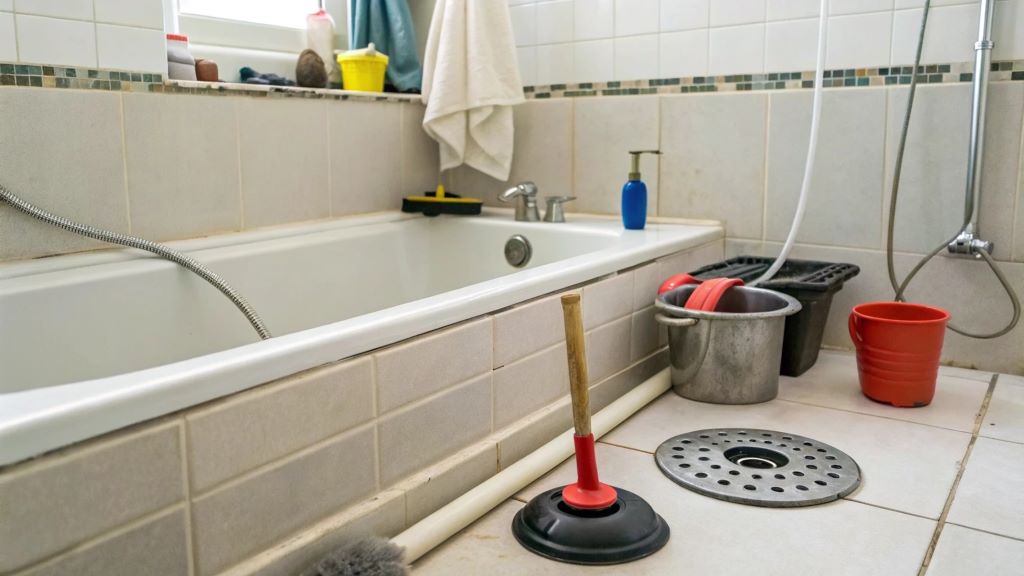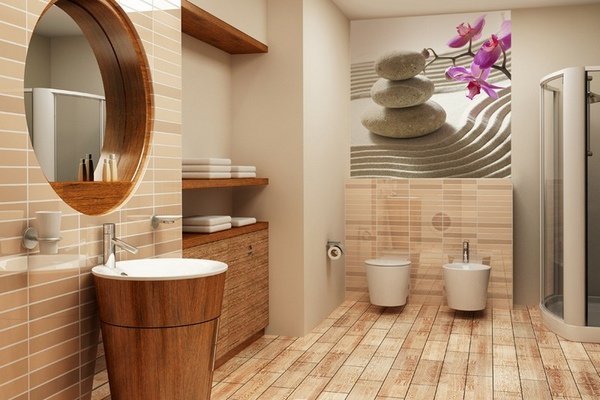A clogged bathtub drain can be a real hassle, especially when you’re looking forward to a relaxing soak or need a quick rinse. The slow-draining water, unpleasant odors, and gurgling sounds are not just annoying—they can be signs of a bigger issue. While calling a plumber is one solution, it can be expensive and time-consuming. Thankfully, there are effective do-it-yourself ways to unclog a bathtub drain without a plumber and handle the problem without professional help.
Whether you’re dealing with hair buildup, soap scum, or a mysterious blockage, there are several proven methods you can use to clear things up quickly and easily. In this guide, we’ll explore the top 5 methods to unclog a bathtub drain without a plumber, saving you both time and money.
For a wide range of household tips and tools, sites like Globaeroshop.com offer excellent guides and products that can help maintain your bathroom plumbing and prevent future blockages.
Why Is Your Bathtub Drain Clogged?
Bathtub drains get clogged primarily due to a mix of hair, soap scum, dirt, and oils. Over time, this combination forms a sticky sludge that can trap even more debris. Sometimes, foreign objects like small toys or shampoo caps can also be the culprit. Recognizing the cause of the clog is essential because it determines which unclogging method will work best.
If you’ve noticed that your bathtub drain clogged situation is getting worse despite your efforts, it might be time to take a more targeted approach using one of the solutions below.
Method 1: Use a Drain Snake or Hair Removal Tool
A drain snake, also known as a plumbing auger, is a simple and effective device to remove hair and debris lodged deep inside your drain. These tools are widely available at hardware stores and online.
How to Use:
- Remove the bathtub stopper or strainer.
- Insert the snake or hair removal tool into the drain.
- Twist and push to catch the clog.
- Pull out the tool and dispose of the debris.
- Run hot water to clear any remaining particles.
This method is especially effective for clogs caused by hair buildup and is one of the quickest ways to see immediate results.
Method 2: Baking Soda and Vinegar Solution
This natural remedy is safe for your pipes and works wonders for minor blockages caused by soap and grime.
What You’ll Need:
- 1/2 cup of baking soda
- 1/2 cup of white vinegar
- Hot water
Steps:
- Pour the baking soda down the drain.
- Follow it with the vinegar.
- Let it fizz for 15–30 minutes.
- Rinse with a kettle of hot water.
This method creates a bubbling chemical reaction that can loosen and dissolve minor clogs, making it a favorite for eco-conscious homeowners.
Method 3: Plunger Technique
A standard cup plunger isn’t just for toilets—it can also be effective on bathtub drains, especially for dislodging soft blockages.
How to Use:
- Fill the bathtub with a few inches of water.
- Position the plunger over the drain, ensuring a good seal.
- Pump up and down rapidly 10–15 times.
- Check if the water starts draining properly.
- Repeat if necessary.
Make sure to block any overflow openings with a damp rag to increase suction.
Method 4: Boiling Water Flush
Sometimes the simplest solutions are the best. Boiling water can melt greasy substances and loosen up residue inside the pipes.
Instructions:
- Boil a large pot of water.
- Slowly pour it down the drain in two to three stages, allowing a few seconds in between.
While this might not work for hair-based clogs, it’s surprisingly effective for clearing soap and oil buildup.
Method 5: Wet/Dry Vacuum
If you have a wet/dry shop vacuum, it can be used to suck out a stubborn clog in your drain.
Instructions:
- Set your vacuum to liquid mode.
- Cover the overflow hole and create a tight seal around the drain.
- Turn on the vacuum to high power.
- Let it run for 30 seconds to a minute.
Sometimes, this method can pull up hair, sludge, or even small objects causing the blockage.
Bonus Tips to Prevent Future Clogs
- Use a drain cover to catch hair and debris.
- Avoid pouring oils or heavy lotions down the drain.
- Flush the drain monthly with hot water.
- Clean the drain regularly using natural solutions like baking soda and vinegar.
Being proactive can reduce the frequency and severity of clogs in the future.
Frequently Asked Questions (FAQs)
- How do I know if my bathtub drain is completely clogged?
If water pools around your feet and takes several minutes (or longer) to drain, it’s likely completely clogged. You may also notice bad smells or hear gurgling sounds from the drain.
- Can I use chemical drain cleaners?
While chemical cleaners are effective, they can be harsh on pipes and not environmentally friendly. It’s best to use them as a last resort or opt for more natural alternatives like baking soda and vinegar.
- What if none of the DIY methods work?
If you’ve tried multiple methods and the water still won’t drain, the clog may be deep within the pipes or due to an obstruction that requires professional tools. In this case, contacting a plumber may be necessary.
- How often should I clean my bathtub drain?
It’s a good idea to clean the drain at least once a month using a natural cleaner or by flushing it with boiling water to prevent buildup.
- Is it normal for hair to clog the drain so quickly?
Yes, especially if multiple people use the bathtub regularly. Hair accumulates quickly and binds with soap scum, forming stubborn clogs over time.
Conclusion
Dealing with a bathtub drain clogged situation can be a frustrating experience, but it doesn’t always require a professional. With the right tools and a little elbow grease, you can fix the issue yourself and keep your plumbing running smoothly.
Whether you choose the classic baking soda and vinegar trick or opt for a more heavy-duty method like a wet/dry vacuum or drain snake, you now have the knowledge to tackle clogs head-on. Take action today and enjoy a clog-free bathtub experience—no plumber required.
Read More:
A List of the Most Crucial Factors that will Affect Your Freestanding Bath Choice





